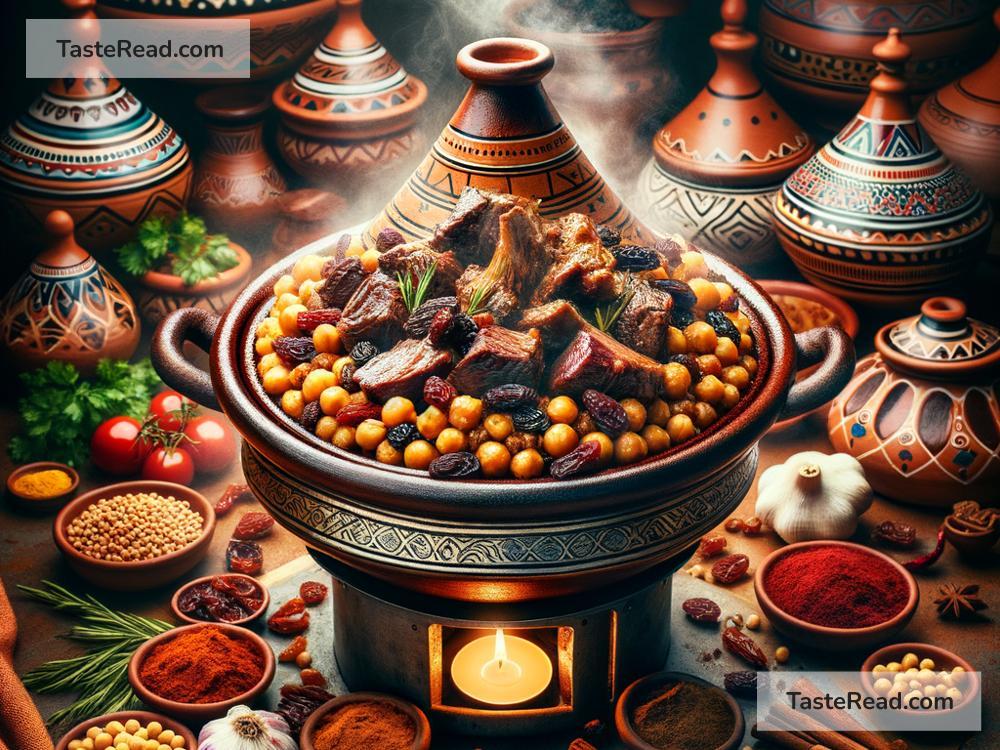Indulging in the Rich Spice Blends of Moorish Tagines in Algeria
If you’re ever in Algeria, one of the most amazing culinary experiences you simply cannot miss is the Moorish tagine. This iconic dish brings together the rich flavors of spices, fresh ingredients, and centuries of cultural traditions. Steeped in history, Moorish tagines showcase the deep connection between Algeria’s cuisine and the legacy of North Africa. Let’s dive into the flavors and the story behind this delicious dish that has captured the hearts and taste buds of people around the world.
What is a Tagine?
A tagine is both a type of dish and the shallow, cone-shaped pot used to prepare it. The pot itself is made of clay or ceramic, designed to let the steam circulate inside, ensuring the food stays tender and flavorful. While tagines are common across North Africa, Algeria’s take on this dish carries unique regional touches that make it truly unforgettable.
Tagines are slow-cooked stews full of fragrant spices, vegetables, and tender meats like lamb or chicken. Because of their slow cooking in the tagine pot, the flavors meld together beautifully. Every bite provides a burst of aroma and taste, ranging from savory to sweet. Algerian chefs often use apricots, honey, and nuts to add a delightful sweetness to tagines, creating a heavenly mix of flavors.
The Moorish Influence on Algerian Cuisine
The word “Moorish” refers to the people and culture of the Moors who lived in North Africa and parts of Europe for hundreds of years. Their culinary traditions greatly influenced Algerian cuisine, blending Arabic, Berber, and Mediterranean flavors into a style that is robust and flavorful.
When you try a Moorish tagine, you are experiencing history. The spices used in these dishes—like saffron, cinnamon, turmeric, cumin, and paprika—are a reminder of the vibrant spice trade that shaped Algerian culture centuries ago. Explorers, merchants, and travelers brought these spices to the region, turning Algerian cooking into an art form rich in variety and taste.
The Harmony of Flavors
What makes Moorish tagines in Algeria so special is their masterful harmony of flavors. Chefs use a delicate balance of warm spices while letting the natural sweetness of fruits, nuts, and honey shine through. Common ingredients include apricots, prunes, almonds, and raisins. These help create a beautiful contrast with the savory meats and hearty vegetables.
For instance, one popular version in Algeria might feature tender lamb cooked with cinnamon, cloves, and a hint of saffron. It’s then topped with caramelized apricots and toasted almonds. The result? A dish that’s rich, comforting, and absolutely unforgettable.
Vegetarian tagines are just as delightful, often starring chickpeas, zucchini, potatoes, and tomatoes, simmered with cumin, garlic, coriander, and a touch of chili for spice lovers. The choice of ingredients can change from region to region in Algeria, but the result is always heartwarming and flavorful.
The Importance of Fresh Ingredients
Another reason why Algerian tagines are so incredible is the use of fresh, local ingredients. Algerian cooking celebrates simplicity, where seasonal produce is the star of the dish. Vegetables like eggplants, carrots, and potatoes are added to the tagine, giving it a robust texture and taste.
In Algeria’s coastal areas, you might find seafood tagines made with local fish, shrimp, and squid, marinated with spices and served alongside olives and preserved lemons. These dishes have a fresh, zesty flavor that’s unlike anything you’ve ever tried.
Sharing and Celebrating with Tagines
Tagines are not just a meal; they’re a shared experience. In the Algerian tradition, meals are often an opportunity to gather with family and friends. The process of cooking a tagine—a slow, patience-demanding method—is almost ceremonial. It encourages people to come together and bond over food.
When served, the tagine pot is placed in the center of the table, and everyone dives into the dish together, using bread to scoop up the flavorful stew. It’s a meal that fosters connection and celebrates the communal spirit.
Where to Try Moorish Tagines in Algeria
If you’re visiting Algeria, you’ll find tagines on menus throughout the country, from bustling cities like Algiers to more rural settings. Many small restaurants, known as “culinary havens,” specialize in traditional dishes like tagines, offering a truly authentic experience.
One of the best ways to explore Moorish tagines is by visiting Algeria’s markets. Here, you’ll find vendors selling fragrant spices, fresh produce, and handmade tagine pots, giving you a feel for the foundations of this iconic dish.
Bringing Moorish Tagines to Your Home
The good news is, you don’t have to travel to Algeria to experience the flavors of a Moorish tagine. With the right ingredients, you can bring a piece of Algerian culture to your own kitchen. All you need is a tagine pot and a handful of spices like saffron, cinnamon, turmeric, and cumin.
Start by slow-cooking your meat or vegetables, layering in your spices, and adding sweet touches like apricots or raisins. Let the dish simmer patiently in the pot, and soon, your kitchen will fill with an irresistible aroma.
Final Thoughts
Moorish tagines in Algeria are more than just a meal—they’re a celebration of the country’s history, culture, and craftsmanship. With their fragrant spice blends, tender meats, and rich flavors, they’ve become a symbol of Algeria’s culinary art and a favorite dish for locals and visitors alike. Whether you’re experiencing it in Algeria or cooking it in your own home, a Moorish tagine promises a journey into the heart of North African cuisine. So go ahead—discover Algeria through the flavors of this wonderful dish. Bon appétit, or as they say in Algeria, Saha ftourkoum! (Enjoy your meal!)


